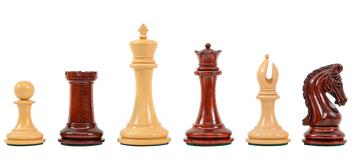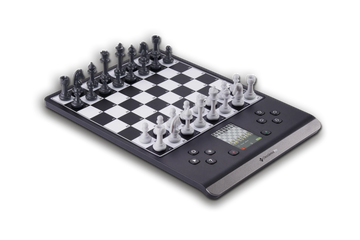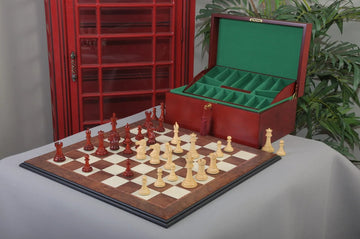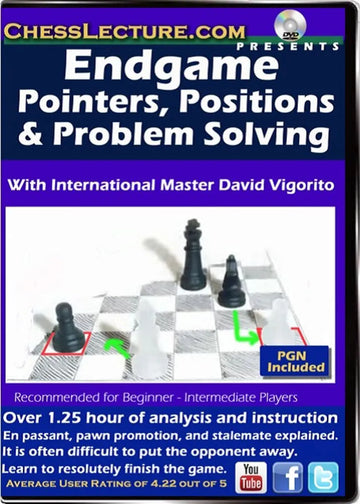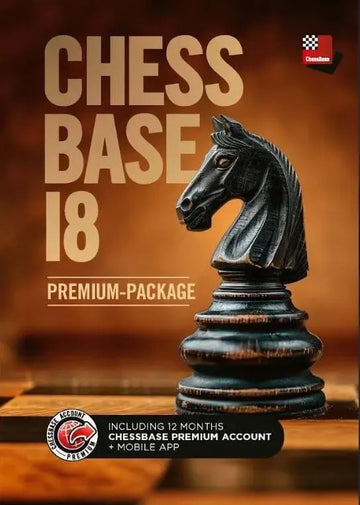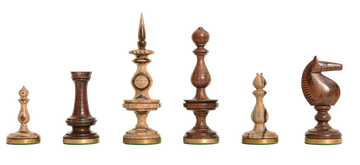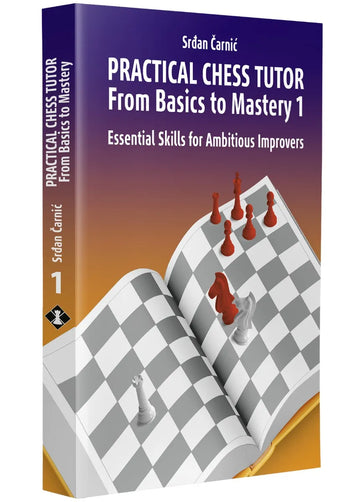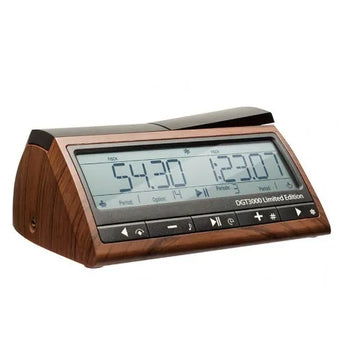A Comprehensive Guide To Stalemate In Chess
Losing a chess game is never fun. But what might be worse is not winning a game that you were supposed to win! Being up material and accidentally drawing a game is one of the worst feelings. And the number one way that can happen is through a stalemate. If you don't understand stalemate, don't worry, you are not alone. Stalemate is one of the most misunderstood rules in chess. But it's simple, and after you read this guide, you will never have to wonder if your position is stalemate.

What is Stalemate in Chess?
Understanding stalemate is an important part of understanding chess as a whole. And blundering into a stalemate is a classic beginner's mistake. Simply put, a stalemate is a draw. A tie. A result where no one wins. Stalemate happens when the player whose turn it is to move is not in check, but has no legal move. In the position below, notice how the king stuck in the corner cannot move their king, but they are also not in check currently.

Nil Nil
Depending on what sports you like to watch, a draw may or may not be something you are familiar with as a possible result. In American Soccer, for instance, a zero-to-zero game is not abnormal. No one wins. In chess, however, there are times when one player is winning by the equivalent of ten points, and because of a single mistake at the last second, the game ends in a draw.
Win, Draw, or Loss?
Before the 1800s, a stalemate was not considered a draw; it was simply considered another form of a win for the team that trapped the opponent's king. In some ways, this makes sense. If the goal of chess is to trap the enemy king, then a stalemate achieves just that. But it’s not attacking the king, and that's the key.
When it is NOT a Stalemate in Your Chess Matches
Understanding a stalemate is best achieved by recognizing when something is not a stalemate. Let's start with a basic checkmate. This checkmate is obviously not a stalemate, because the king is in danger, has no safe squares to go to, and they cannot block the attack. This means they cannot use their ABCs, or away, block, capture, or the ways to escape check. So… Checkmate!

When the King is in Check
A quick check to see if there is a stalemate is to determine if the king is currently in check. If so, then you don’t have a stalemate.
When a Piece Can Still Move
Another resource beginner players often overlook when determining if a position is a stalemate is whether or not another piece, other than the king, can still move. Many, many times, I will have students raise their hands and say, “Is this a stalemate? The king has some moves!” I have to remind them of this rule. Take a look at this position. Is it familiar?

It's the starting position! And if the king having no legal moves were the only requirement for something being stalemate, then every game of chess would end before it started, in stalemate.
When the King Has an Escape!
If the king has a square to move to, even if it isn’t in check, you are not in stalemate. The Five Warning Signs for Stalemate. This will often be the first thing you notice about a position that ends up being stalemate. If you notice the king has no escape, watch out for stalemate.
They Only Have Their King
One sign that a stalemate may be imminent is if you or your opponent has only the king remaining. While stalemate can occur with some locked pawns, it is most likely when just the king is on the board. So, if you are trying to checkmate, keep an eye out for whether your opponent has any straggling pawns remaining that can still move, because if so, then stalemate will not happen yet!

You are Promoting Everything!
Some beginners, and even intermediate players, find the easiest way to win a game to be promoting a large number of new queens. This is a good method for conversion, but be careful! Especially if you have other random pieces lying around, and if your opponent is down to just a king, promotion could be a demotion from a win to a draw.
They are Trapped
If the black or white king has no moves, be careful what other pieces you capture. This is the most effective way to trick your opponent into conceding a draw via stalemate. If you notice your king has no moves, and all you have is one piece, sacrifice that piece for a stalemate and pocket your undeserved draw.
The King is in the Corner
If you are trying to checkmate with just a queen or a rook, then getting the king to the side of the board and to the corner of the board is usually your goal. But beware. The corner of the board can be a perfect spot for a stalemate. If you learned to put your queen a knight's jump away from the king to do the king and queen mate, then you might fall for this classic stalemate.

King and Pawn Endgames
Opposition is complicated, but what's not complicated is stalemate. If the king has no squares, even though the opponent is up a pawn here, their game will eventually end in stalemate. Pick up Silman's Complete Endgame Course to learn these basic ways to hold a draw, or drill them in chess.com’s online trainer.

How to Use Stalemates in Time Scrambles
Time scrambles are the best time to trick your opponent into a stalemate. Whether you sacrifice a piece to steal the draw, or your opponent accidentally takes away your king's last square, it is all more likely to happen when the time is running low. Time is the great equalizer, and a draw might just be a fair result after some scrambling. So if you notice your opponent is running low on time, don’t resign just yet; see if you can swindle a draw with a stalemate.
Watch Out For Sacrifices
Sacrificing in a lost position to get a stalemate, sometimes called a desperado sacrifice, is by far the most satisfying way to stalemate your opponent. I once had thirteen brilliant moves in one game, all because my opponent wouldn’t accept my desperado, before finally giving in and taking the draw. Can you find the move I played below?

Types of Chess Draws Other Than Stalemate in Chess
Not every chess game ends in a dramatic checkmate after sacrificing half your army. Some draws are tense and strategic; others are as simple as a handshake. Here are the main types of draws you’ll encounter in chess:
1. Draw by Agreement
One of the most straightforward outcomes: both players agree to a draw and end the game, often when the position looks equal or when neither side sees a clear path forward.
2. Threefold Repetition
If the same position appears on the board three times, with the same player to move and the same legal options, it’s a draw. Players can sometimes use this to escape a bad position, forcing a repetition to avoid losing. A perpetual check is a common example, where one side checks the king repeatedly to secure a draw.
3. The Fifty-Move Rule
This rule often confuses new players. It states that if fifty consecutive moves pass without any pawn movement or captures, either player can claim a draw. As a tournament director, I’ve heard kids ask if their game is a draw just because it’s gone on for fifty moves — this rule has specific conditions that must be met.
4. Insufficient Material
If neither side has enough pieces left to deliver checkmate, the game is automatically drawn. The classic example? King vs. king. No possible sequence of legal moves will end the game with a checkmate.
Can you Find the Crazy Stalemates?
Here are some more crazy stalemates. The game of chess isn’t over until its over, so see if you can spot some of these great ways to save a draw.


You Have to Focus All the Way to the End in Chess Matches
Stalemate is a classic example of something great about chess, that every little thing matters. Even when you are already winning a game, you have to focus all the way until checkmate, otherwise you could end up with a draw, or worse, blunder checkmate.
Frequently Asked Questions
Stalemate in chess is a draw. If the king has no legal move, no other piece can be moved, and the king is not in check, then the result is a stalemate. Even if one side is completely winning, the game is still a draw.
That's a good question! Back in the 1800s, it was considered a win. So why is it not anymore? In the 1820s the chess world accepted the French and Italian standard that a stalemate was a drawn game, because the king is not in danger.
To get out of a stalemate that means that it isn’t a stalemate at all. So, first, make sure your king is not in check. If it is, the game isn’t a stalemate. Then, see if your king has any legal moves; if it does, it’s also not a stalemate. Finally, check whether any of your other pieces can move—if even one piece has a legal move, the game continues.
Whether or not a stalemate is good or bad completely depends on whether you are winning or losing at the time of the stalemate. If you evaluate the position and think that you are losing, then looking for a way to make a stalemate is a great idea.
There are a few moments to be extra careful about stalemate. If your opponent only has their king left, or has no moves with their king, watch out for a surprise stalemate! Also, if you and your opponent are low on time, that is a good time to trick your opponent into a stalemate.

